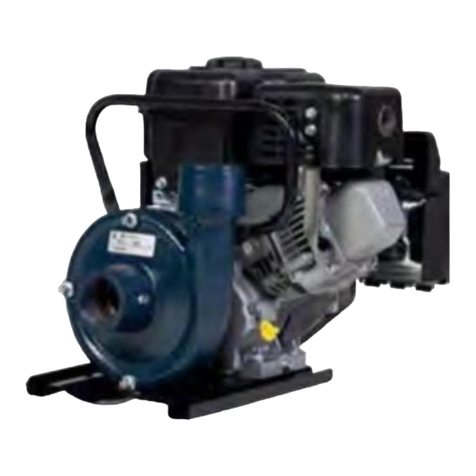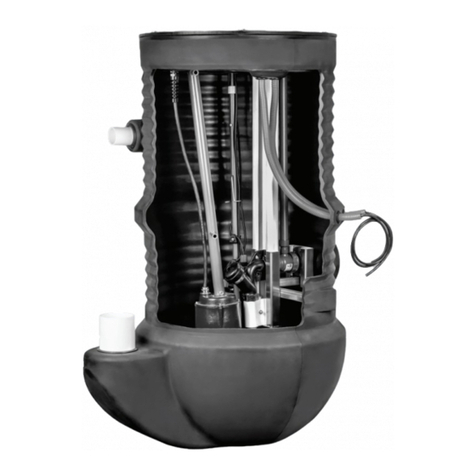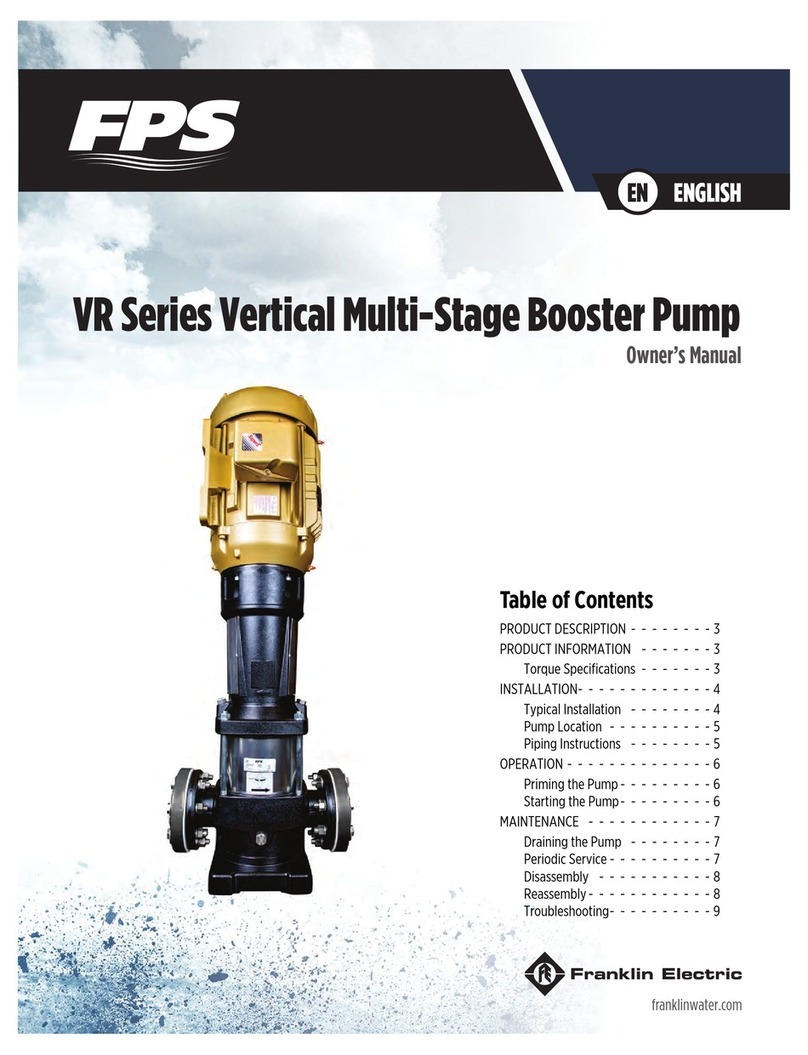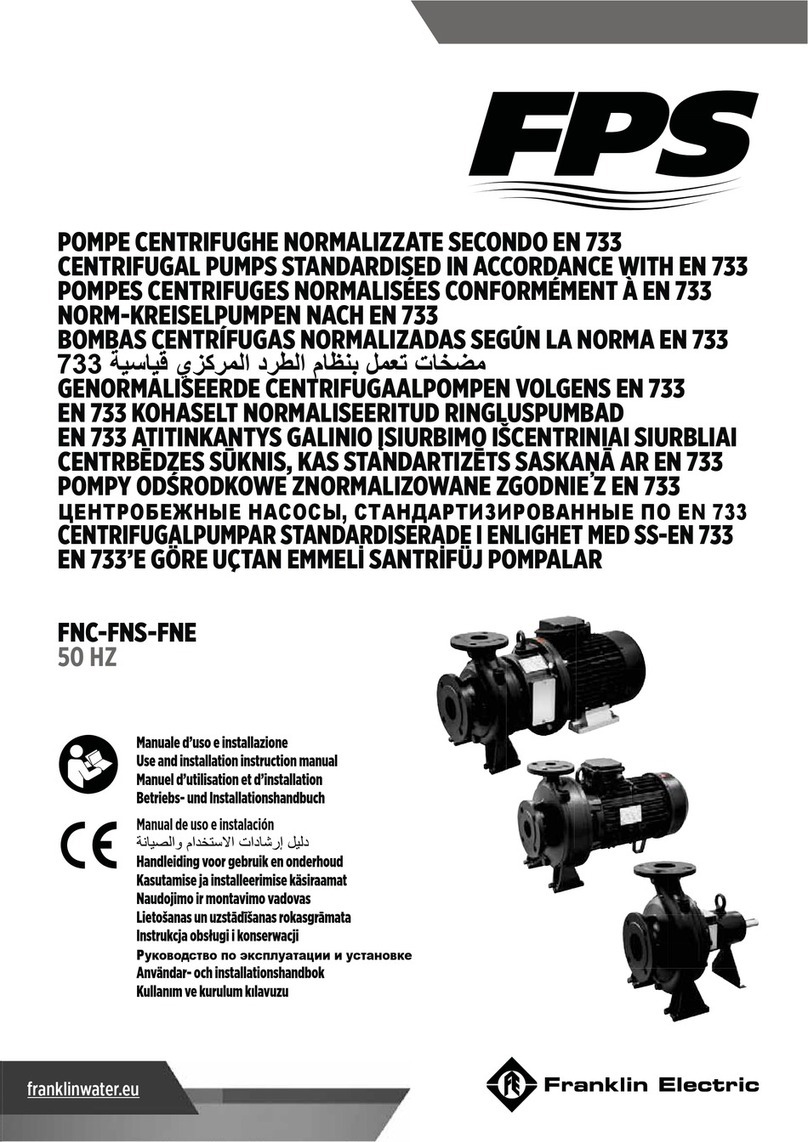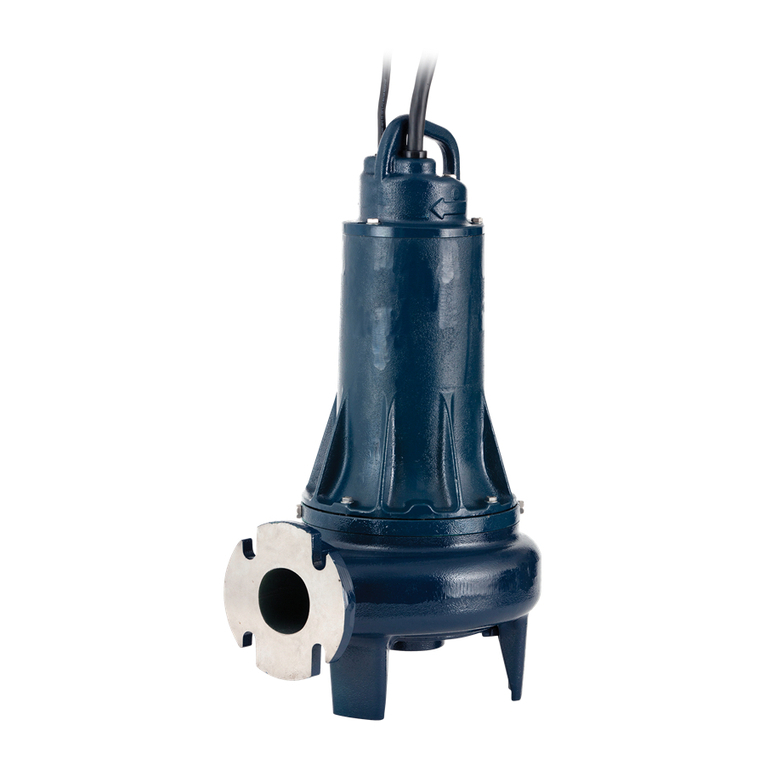
9
STORAGE
SHORT-TERM STORAGE
Normal packaging is designed to protect the pump during shipment
and for dry, indoor storage for up to two months or less. If the pump
is not to be installed or operated soon after delivery, store the unit in
a clean, dry place, having slow changes in environmental conditions.
Steps should be taken to protect the pump against moisture, dirt and
foreign particulate intrusion. The procedure followed for this short-
term storage is summarized below:
Standard Protection for Shipment :
a. Loose unmounted items, including, but not limited
to, oilers, packing, coupling spacers, stilts and mechanical
seals are packaged in a water proof plastic bag and placed
under the coupling guard. Larger items are boxed and metal
banded to the base plate. For pumps not mounted on a base
plate, the bag and/or carton is placed inside the shipping
carton. All parts bags and cartons are identified with the
sales order number, the customer purchase order number
and the pump item number (if applicable).
b. Inner surfaces of the bearing housing, shaft (area through
bearing housing) and bearings are coated with Cortec VCI-
329 rust inhibitor, or equal.
Note: Bearing housings are not filled with oil prior to ship-
ment.
c. Regreasable bearings are packed with grease (Exxon
Mobile Polyrex EM).
d. After a performance test, if required, the pump is tipped
on the suction flange for drainage (some residual water may
remain in the casing). Then, internal surfaces of ferrous
casings, covers, flange faces and the impeller surface are
sprayed with Calgon Vestal Labs RP-743m or equal. Exposed
shafts are taped with Polywrap.
e. Flange faces are protected with plastic covers secured
with plastic drive bolts. 3/16 in (7.8 mm) steel or 1/4 in (6.3
mm) wood covers with rubber gaskets, steel bolts and nuts
are available at extra cost.
f. All assemblies are bolted to a wood skid which confines
the assembly within the perimeter of the skid.
g. Assemblies with special paint are protected with a plastic
wrap.
h. Bare pumps, when not mounted on base plates, are
bolted to wood skids.
i. All assemblies having external piping (seal flush and cool-
ing water plans), etc. are packaged and braced to withstand
normal handling during shipment. In some cases compo-
nents may be disassembled for shipment. The pump must be
stored in a covered, dry location.
It is recommended that the following procedure is taken:
1. Ensure that the bearings are packed with the recom-
mended grease (if grease lubricated) or coated with oil (if
oil lubricated) to prevent moisture from entering the bearing
housings.
2. Remove all glands, packing and lantern rings from the
stung box (if packed). If the pump is supplied with a
mechanical seal, remove the mechanical seal and coat it with
a light film of oil.
3. Ensure that the suction and discharge flanges are covered
and secured with cardboard, plastic or wood to prevent
foreign objects from entering the pump.
4. If the pump is to be stored outdoors with no overhead
covering, cover the unit with a tarp or other suitable cover-
ing.
LONG-TERM STORAGE
Long-term storage is defined as more than two months, but less than
12 months. The procedure Franklin Electric follows for long-term stor-
age of pumps is given below. These procedures are in addition to the
short-term procedure above.
Solid wood skids are utilized. Holes are drilled in the skid to accom-
modate the anchor bolt holes in the base plate or the casing and bear-
ing housing feet holes on assemblies less base plate. Tackwrap sheet-
ing is then placed on top of the skid and the pump assembly is placed
on top of the Tackwrap. Metal bolts with washers and rubber bushings
are inserted through the skid, the Tackwrap and the assembly from the
bottom of the skid and are then secured with hex nuts. When the nuts
are “snugged” down to the top of the base plate or casing and bearing
housing feet, the rubber bushing is expanded, sealing the hole from
the atmosphere. Desiccant bags are placed on the Tackwrap. The
Tackwrap is drawn up around the assembly and hermetically (heat)
sealed across the top. The assembly is completely sealed from the
atmosphere and the desiccant will absorb any entrapped moisture. A
solid wood box is then used to cover the assembly to provide protec-
tion from the elements and handling. This packaging will provide
protection up to twelve months without damage to mechanical seals,
bearings, lip seals, etc. due to humidity, salt laden air, dust, etc. After
unpacking, protection will be the responsibility of the user. Addition
of oil to the bearing housing will remove the inhibitor. If units are to
be idle for extended periods after addition of lubricants, inhibitor oils
and greases should be used.
Every three months, the shaft should be rotated approximately 10
revolutions.


















